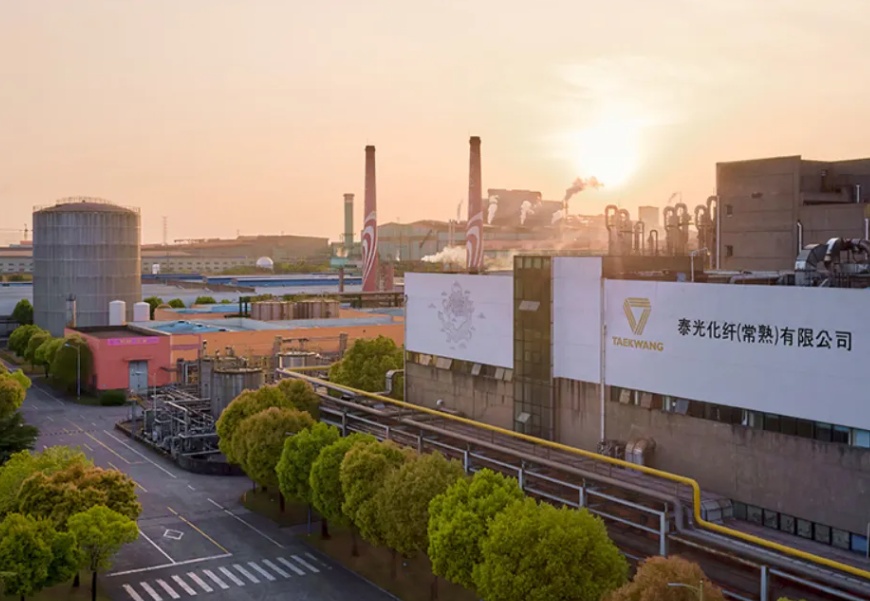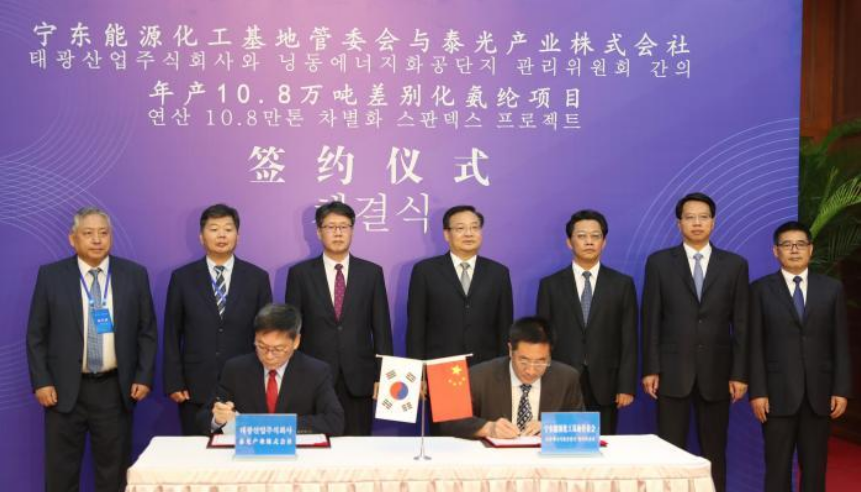"taiguang hits the pause button: China's Spandex Factories Face a Reassessment Moment"

Recently, the Korean Taekwang Group announced that it will suspend operations of certain spandex production lines at its Chinese subsidiary, Taekwang Chemical Fiber (Changshu) Co., Ltd., starting from July 14, 2025, and will reassess its future strategy. This is the first time that the Korean Taekwang Group has shut down production lines at a spandex factory in China. It is believed that this decision is due to the continued large-scale expansion of local competitors and the slow recovery of market demand, which has worsened the profitability of local factories.
Taekwang Fiber (Changshu) Co., Ltd. was established in 2003 and is the overseas spandex production base of the South Korean Taekwang Group, with an annual output of nearly 30,000 tons. Taekwang Fiber (Changshu) Co., Ltd. suspended one production line for equipment inspection on July 14, 2025, and is considering shutting down another production line on July 21, with possible further adjustments based on evaluation results.
According to a relevant person from South Korea's Taekwang Group, "No specific decision has been made yet regarding whether to close or withdraw from the factory."
TaeguTec (Changshu) Co., Ltd. was once seen as a cash cow for the Korean Taegu Group. However, the company has now reported losses for three consecutive years and is currently in a state of complete capital impairment. Data shows that TaeguTec (Changshu) Co., Ltd. has experienced a continuous decline in sales since 2021, resulting in consecutive losses. Considering that Chinese competitors are expanding their production capacity through large-scale investments, its future prospects are even more bleak.
Ningxia, China, 108,000 tons/year spandex projectInvestment has been suspended!
The investment project by South Korea's Taekwang Group to build a second spandex factory in Ningxia, China has also been suspended.

In 2022, the South Korean Taekwang Group established Taekwang Chemical Fiber (Ningxia) Co., Ltd., planning to build a differentiated spandex project with an annual production capacity of 108,000 tons, with an investment of 4.468 billion yuan. The planned area is 500 acres, and the main products include 51,000 tons of 20D spandex, 16,200 tons of 30D spandex, and 40,800 tons of 40D spandex. The project will be constructed in three phases, with each phase having a spandex production capacity of 36,000 tons. The originally planned completion date for the first phase is August 2024, the second phase is August 2025, and the third phase is August 2026.
However, Taiguang Chemical Fiber (Ningxia) Co., Ltd. decided to suspend its investment in May last year and regarded its previous investment funds as losses, judging that they could not be recovered.
China's spandex production capacity continues to rise.
China's largest spandex producer, Huafeng, has a production capacity of 325,000 tons per year, with an additional 150,000 tons of capacity under construction, which is more than ten times that of Taiguang Chemical Fiber (Changshu) Co., Ltd.
Another large spandex manufacturer, also a South Korean company, Hyosung Group, is gradually shutting down the production lines of Hyosung Spandex (Jiaxing) Co., Ltd. By the end of 2023, 8 production lines have been shut down, with plans to shut down 2 more lines by July 2025 and another 2 lines by March 2026, aiming to completely cease operations by the end of 2026. However, the gradual shutdown of this factory is not due to market factors, but rather attributed to air odor issues in the northern area of Jiaxing. It is reported that the spandex production capacity of this factory is 130,000 tons per year. Hyosung Group is also constructing a project with an annual output of 360,000 tons through its subsidiary, Hyosung Spandex (Ningxia) Co., Ltd., which is planned to be built in 5 phases, with the construction currently reaching the 3rd phase.
Other major spandex manufacturers in China include: Xinxiang Chemical Fiber, Huahai Spandex, Taihe New Materials, Hengshen, Hangzhou Banglian, Zhuji Huahai, and Jiangsu Shuangliang.
Old equipment accelerates retirement.
According to China's "Carbon Peak Implementation Plan for the Chemical Fiber Industry," starting from 2025, a carbon tax of 200 yuan per ton will be imposed on spandex production with carbon emissions exceeding 3.2 tons per ton. Some old facilities clearly exceed this standard, making them lose competitiveness in terms of price. The plan also mentions promoting the lower energy-consuming "melt-spun spandex" technology. If the cost of upgrading the necessary equipment is high, this will accelerate the phase-out of old spandex facilities.
In addition, the proportion of domestic spandex in the total procurement of Chinese sports brands is continuously increasing. Leading domestic brands such as Anta, Li Ning, and Xtep have a procurement ratio of over 90% for domestic spandex, with some high-end series potentially importing small amounts due to performance requirements. Small and medium-sized brands are more cost-sensitive, resulting in an even higher localization rate (over 95%). Besides the South Korean company Hyosung Group, which continues to actively build spandex production capacity in China, the market share of other foreign spandex manufacturers is being gradually squeezed, and they may completely withdraw from the Chinese market.
【Copyright and Disclaimer】The above information is collected and organized by PlastMatch. The copyright belongs to the original author. This article is reprinted for the purpose of providing more information, and it does not imply that PlastMatch endorses the views expressed in the article or guarantees its accuracy. If there are any errors in the source attribution or if your legitimate rights have been infringed, please contact us, and we will promptly correct or remove the content. If other media, websites, or individuals use the aforementioned content, they must clearly indicate the original source and origin of the work and assume legal responsibility on their own.
Most Popular
-

At Least 44 Dead in Century-Old Fire! Questioning Hong Kong's Hong Fu Garden: Why Has the Path to Fire Resistance Taken 15 Years Without Progress?
-

Satellite chemical's profits surge! can the 26.6 billion yuan high-end new materials project meet expectations? a review of progress on four major projects
-

Key Players: The 10 Most Critical Publicly Listed Companies in Solid-State Battery Raw Materials
-

Estun Turns Profitable in 2025 Half-Year Report, Industrial Robot Shipments Rank First Among Domestic Brands
-

Avatr Files for IPO on HKEX, Plans to Complete Listing in Q2 2026






